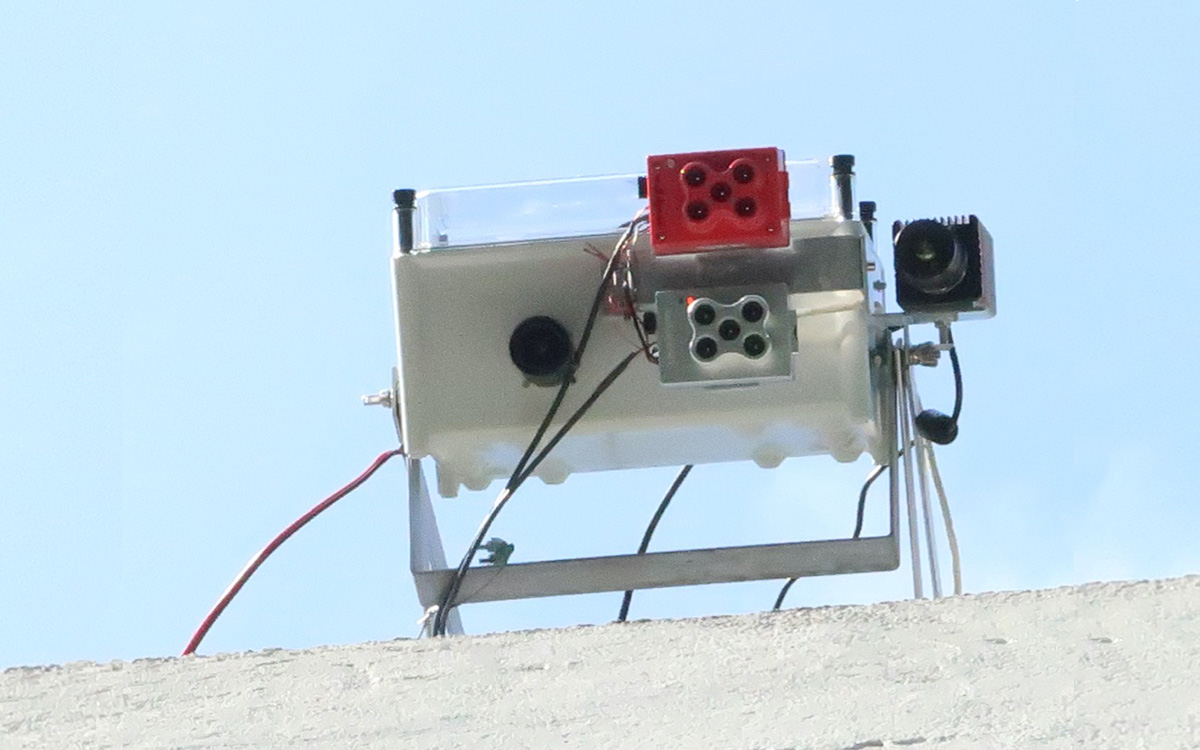General Description
Camera systems installed on a river-spanning bridge, coupled with deep-learning object detection algorithms to monitor floating macro litter, yield essential insights about the presence, amount, and types of plastic contamination in aquatic environments.
RGB cameras
RGB cameras will be used in the operational set-up for monitoring of floating macro-plastic litter at the different demo sites. They have the advantage of low-cost, making it possible to place multiple RGB cameras at one bridge to cover the full width of the river.
Combining all images collected by the different cameras of one bridge makes it possible to derive a plastic flux product (expressed in number of items per time unit). Two different RGB systems will be installed: the RLC-1212a (operated by VITO) and pLitterCCTV (operated by AIT).
RGB camera systems: RLC-1212a (top) and pLitterCCTV installed at different locations in Thailand (bottom)
Multispectral camera
Next to the operational RGB cameras, measurements will be taken with a multispectral camera. The spatial resolution of multispectral data is lower than RGB data, but the additional spectral information has the potential to support the discrimination between different floating matter classes. The multispectral camera selected in INSPIRE is the MicaSense RedEdge-MX Dual camera (operated by VITO).
Multispectral camera system
INSPIRE partner responsible for implementation:
VITO, Vlaamse Instelling voor Technologisch Onderzoek
Belgium

AIT-GIC, Asian Institute of Technology (Geoinformatics Center)
Thailand

- Goal: Detection
- Target Litter: Floating macrolitter (> 2.5 cm)
- INSPIRE Use Cases: Scheldt (Temse), Po
- Contact: Liesbeth De Keukelaere
- Email: liesbeth.dekeukelaere@vito.be
- Contact: Kittiphon Boonma
- Email: kboonma@ait.asia
- Website: remotesensing.vito.be



